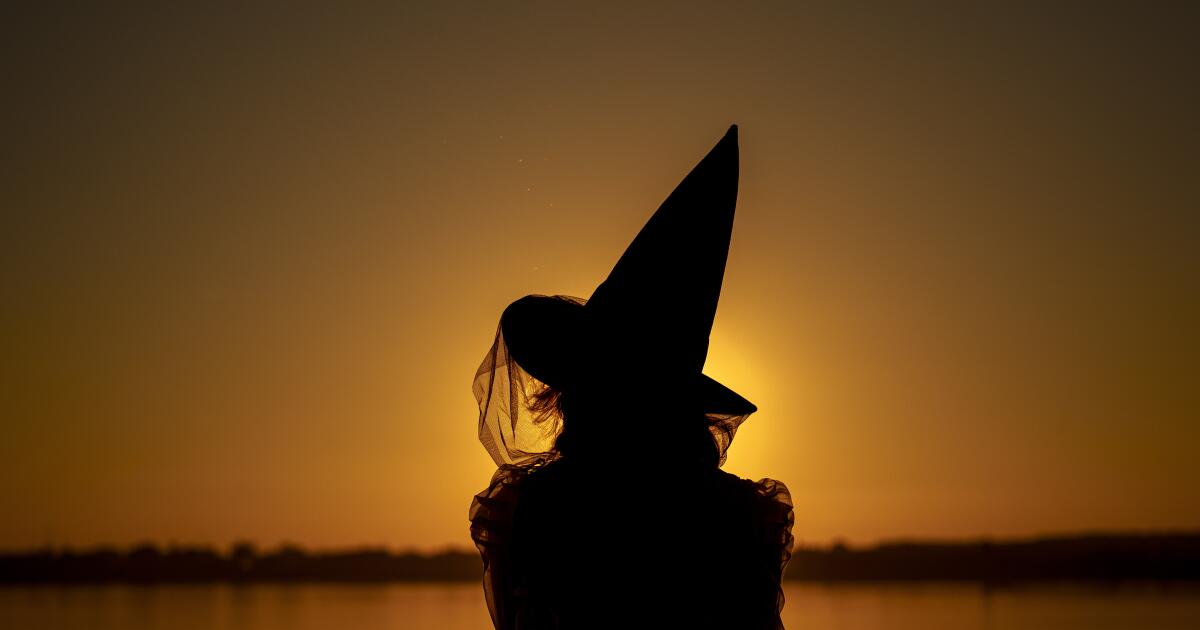One of the best parts of new parenthood is figuring out what your child is going to be for Halloween. Considering the costume possibilities for my 15-month-old, I have been surprised and often delighted by what one can find on the internet. For a reasonable price, you can dress your baby up as Cher Horowitz, Doc Brown, Lord Farquaad, Mary Poppins or a Rydell High cheerleader while you yourself take on the persona of Austin Powers, Forrest Gump, Harry Potter or Wonder Woman. The holiday seems nostalgic and innocent, even unifying in its appeal to the one thing we all share: that we were children once.
That is, of course, until I walk outside, where I am reminded of my lifelong discomfort with the more lurid aspects of Halloween. All around me are homes festooned with terrifying man-made skeletons, goblins, clowns and witches. “How can anyone stand this?” I keep asking myself.
As it turns out, Halloween has always been rooted in dueling ideas of the otherworldly. Set aside in the 9th century as a day to honor the Catholic saints, it succeeded an even older Gaelic celebration of transition between seasons and states of being. Our modern holiday might be thought of as a portmanteau of All Hallows’ Eve — the Christian feast that precedes All Saints’ (or Hallows’) Day — and Samhain, an ancient Celtic holiday marking the final harvest of the year and the beginning of winter.
As Katherine May writes in her book “Wintering,” Samhain (pronounced sah-win) represents a seasonal and spiritual threshold at which the veil between this world and the next is at its thinnest, inviting loved ones we have lost to visit us. Between fall’s radiant foliage and the year’s first snow, it’s “a time between two worlds, between two phases of the year,” and “a way of marking that ambiguous moment when you didn’t know who you were about to become, or what the future would hold.”
Today we have lost much of this reverence for Halloween, yet the holiday continues to thrive. Oblivious to its original purpose, our modern version is an expression of the American idea that you can be whoever you want to be as well as a vehicle for our tensions and anxieties, turning death into a joke with temporary disguises and decorative one-upmanship.
Maybe the detached skulls and bloody hands on our lawns are part of an endeavor to harness or reclaim our fears. Or maybe the fantastical monsters of our imaginations have become easier to face than the human monsters running for our public offices — a process that culminates every few years, as it happens, just days after Halloween.
In the run-up to the 2018 midterm elections, Elizabeth Bruenig wrote for the Washington Post that Halloween “gets its depth and intrigue from the layering of things that seem frightening but are really benign — toothy jack-o’-lanterns, ghoulish costumes, tales of ghosts and witches and monsters — atop things that seem benign but are really frightening, such as the passage of the harvest season into the long, cold dark.”
Yet what if we should really be frightened not so much of the “long, cold dark” as our unwillingness to confront it? Americans sometimes seem unable to face the real darkness of the world, much less embrace what can be gained from it: compassion for others’ suffering; acceptance of the seasonality of life; separation from the capitalist hustle; and a greater sense of gratitude, belonging and purpose.
The passage of time, grief for those we have lost, longing for a better world that seems perpetually out of reach — all of these things can be frightening. But they don’t have to be.
As election day looms just beyond this ancient celebration, it’s time to put the “hallow” back in Halloween. Amid the bare branches, flickering candles and migrating birds lies an invitation to reflect not only on the children we once were but also on the adults we aspire to become — and to dwell, for a moment, in the seasonal and spiritual in-between.
Cornelia Powers is a writer who is working on a book about the golfer Bessie Anthony, her great-great-grandmother.

